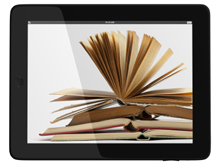Mark 2011 as the year news organizations discovered e-books.
Sure, Time Magazine tried one back in 2010, but this year at least 10 other newspapers, magazines or news websites have published at least 17 electronic-only books seeking bigger audiences and longer lives for their greatest stories. Many more are coming.
I analyzed those 18 e-books to study their topics, prices and strategies. And I talked with people from Vanity Fair, which published three e-books this year and is planning more, and the Los Angeles Times, which just published its first and expects up to 10 over the next year.
Here are five lessons so far about using e-books for news.
Shorten the production cycle
The most talked-about book chronicling the 2008 presidential election — “Game Change” by John Heilemann and Mark Halperin — was published in January 2010. The 2012 election cycle will be different.
Instead of waiting more than a year for writing, editing, printing and distribution of print books, Politico will publish a series of four e-books (the first coming Nov. 30) during the campaign. Meanwhile, Real Clear Politics just last week published its first of three e-books on the 2012 election.
Books capitalizing on current events are also coming faster.
The Boston Globe published its trio of e-books on Whitey Bulger only seven days after the FBI apprehended the longtime fugitive gangster.
Vanity Fair published its e-book of eight stories about Elizabeth Taylor only eight days after her death, David Friend, editor of creative development, told me. About 10 days after the News of the World scandal broke, Vanity Fair had assembled an e-book of its 20 best stories on Rupert Murdoch and News Corp. from the past 25 years.
Crime and politics are popular topics
Five of the 18 e-books I reviewed related to criminals or high-profile court cases. Four were about politics or government (plus five future books promised by Politico and Real Clear Politics).
There were at least two books each on business/economic issues, terrorism/foreign policy (led by bin Laden), and celebrities.
How are publishers choosing their e-book topics? Most seem to just follow their instincts for what readers want.
Vanity Fair doesn’t do market research to plan its e-book topics, Friend said. The editors just follow “what excites us, editorially. If we like it, we hope others will like it.”
Different price points
Among the 18 e-books I reviewed, nine had a list price of $3 or less. These tended to be shorter books, or “singles,” and often were based on previously published content.
Four of the books cost between $3 and $6, while five of the books cost $6 or more. The highest price was $9.99, for multimedia-rich e-books by ABC News on Amanda Knox and the British royal wedding.
The L.A. Times may test some new business models with upcoming e-books, such as having them paid for by a sponsor or advertising, said Emily Smith, senior vice president of digital. Another idea is to use an e-book as a digital version of the free tote bag, she said, a reward you give away to subscribers.
Need to add value
How do you persuade people to buy a collection of stories published previously that may be found for free in online archives? Try thinking of it like a DVD.
The DVD also contains previously released content which might be found elsewhere (cable TV) for free. But studios have figured out they can add value by packing the DVD with exclusive deleted scenes, director commentary and behind-the-scenes documentaries.
E-books can work the same way. Vanity Fair’s Elizabeth Taylor collection added two new stories to the six previously published.
The new L.A. Times e-book, “A Nightmare Made Real,” draws from staff writer Christopher Goffard’s two-part series in the paper about a Las Vegas banker accused of kidnapping, torture and sexual assault. But it also adds “more detailed portraits of key characters and Goffard’s account of how an unlikely tip led to his narrative.”
Don’t forget print books
The quick publishing and low cost of e-books offer many advantages, but in some cases the additional investment in a printed book may pay off as well.
The Boston Globe has been publishing print books for a long time, especially to commemorate local sports team championships. The Globe has two more hardcover books coming out soon — a biography of Mitt Romney in January and a book on Fenway Park’s 100th anniversary in March.
The Washington Post’s 2010 book, “Landmark: The Inside Story of America’s New Health Care Law and What It Means for Us All,” was published in hardback and paperback, as well as an e-book. The paper now is surveying readers about their interest in buying cookbooks, travel guides and other types of books.
One advantage of publishing a book, printed or electronic, is you can reach new audiences for stories of nationwide interest or lasting relevance. A reader in New York may never read the daily edition of the L.A. Times, but she might see its e-book in the Kindle store and download it. Even a reader in L.A. might not see the paper’s daily coverage of the Las Vegas banker story, but he could download the e-book a year later and read it one weekend.
“We have too many great stories and world-class journalism in databases,” Times Managing Editor for News Davan Maharaj said. “Many of these stories live on, and they translate well to some of these devices with just a tweak here and a tweak there.”
It’s likely 2012 will be an even bigger year for e-books. New low-cost e-readers from Amazon and Barnes & Noble debuted just in time for the holidays.
Said Vanity Fair editor Friend, “From what we’re seeing with the holiday sales of e-readers, seeming to the biggest thing since Rubik’s Cube or Cabbage Patch dolls, this could be really big.”








Comments